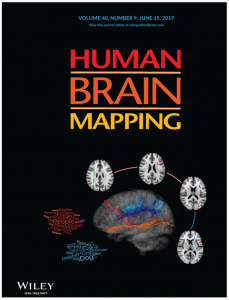A Paper by Assoc. Prof. Sato et al. Published in Human Brain Mapping
A Paper by Assoc. Prof. Wataru Sato et al. was published in Human Brain Mapping. The title of the paper was “Widespread and lateralized social brain activity for processing dynamic facial expressions”.

Sato, W., Kochiyama, T., Uono, S., Sawada, R., Kubota, Y., Yoshimura,
S., & Toichi, M. (2019). Widespread and lateralized social brain
activity for processing dynamic facial expressions. Human Brain Mapping.
https://onlinelibrary.wiley.com/doi/full/10.1002/hbm.24629
○Abstract
Dynamic facial expressions of emotions constitute natural and powerful means of social communication in daily life. A number of previous neuroimaging studies have explored the neural mechanisms underlying the processing of dynamic facial expressions, and indicated the activation of certain social brain regions (e.g., the amygdala) during such tasks. However, the activated brain regions were inconsistent across studies, and their laterality was rarely evaluated. To investigate these issues, we measured brain activity using functional magnetic resonance imaging in a relatively large sample (n = 51) during the observation of dynamic facial expressions of anger and happiness and their corresponding dynamic mosaic images. The observation of dynamic facial expressions, compared with dynamic mosaics, elicited stronger activity in the bilateral posterior cortices, including the inferior occipital gyri, fusiform gyri, and superior temporal sulci. The dynamic facial expressions also activated bilateral limbic regions, including the amygdalae and ventromedial prefrontal cortices, more strongly versus mosaics. In the same manner, activation was found in the right inferior frontal gyrus (IFG) and left cerebellum. Laterality analyses comparing original and flipped images revealed right hemispheric dominance in the superior temporal sulcus and IFG and left hemispheric dominance in the cerebellum. These results indicated that the neural mechanisms underlying processing of dynamic facial expressions include widespread social brain regions associated with perceptual, emotional, and motor functions, and include a clearly lateralized (right cortical and left cerebellar) network like that involved in language processing.
https://onlinelibrary.wiley.com/doi/full/10.1002/hbm.24629
2019/05/24